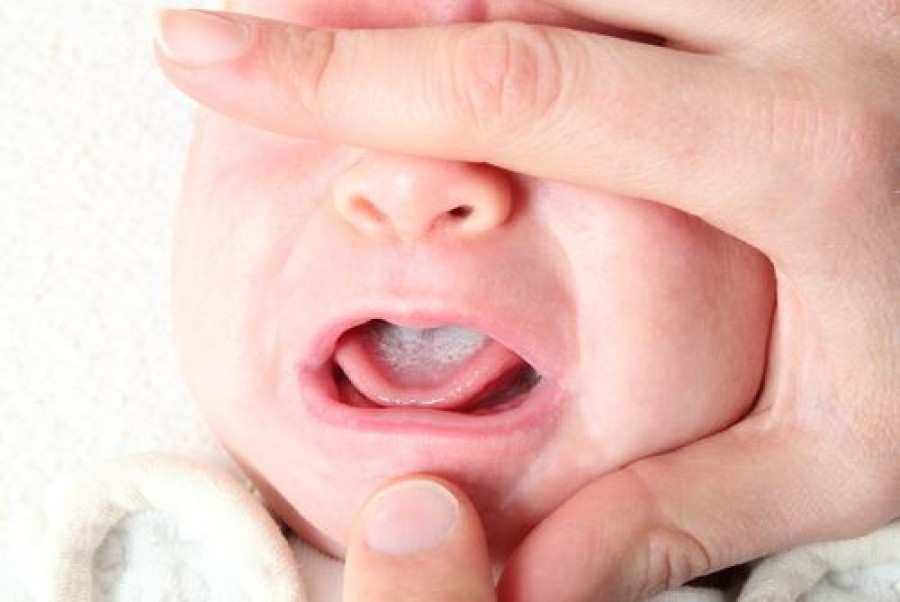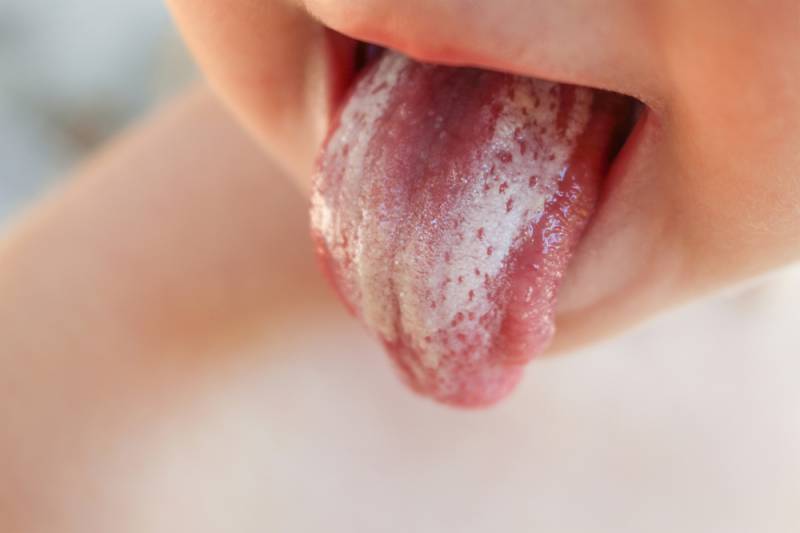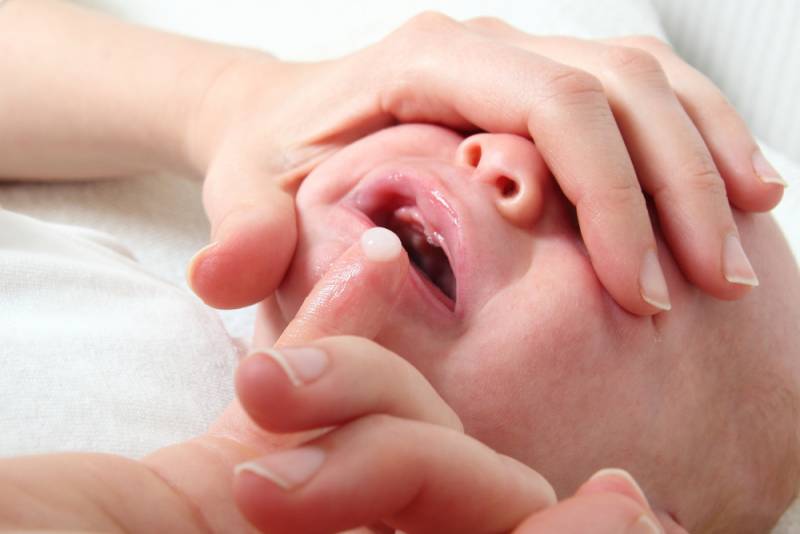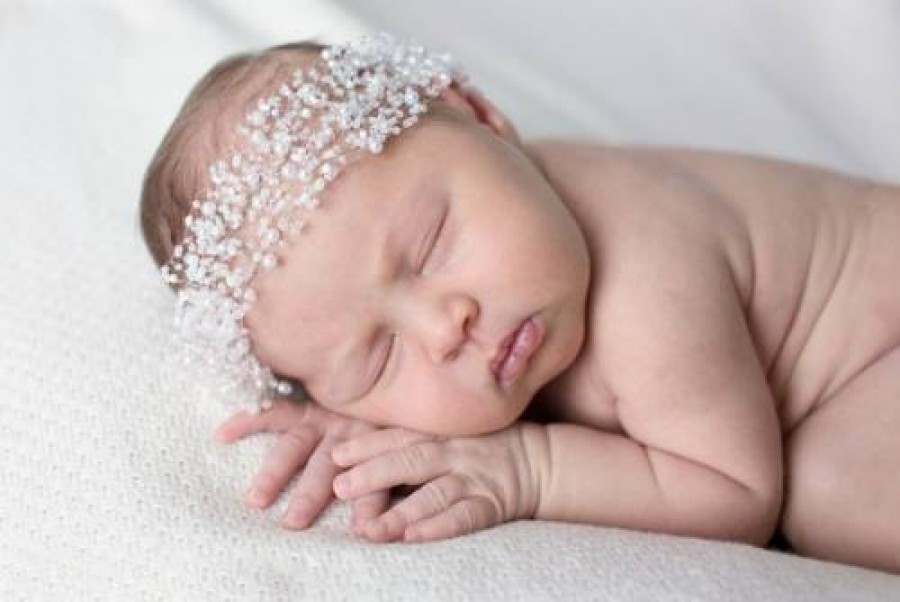Oral Thrush in Babies: Signs, Treatment and Prevention

Your baby may develop many different minor infections and illnesses as they grow. While it’s always upsetting to see your little one experiencing this, it’s good to remember that this is helping them to develop a stronger, healthy immune system to help them grow and continue to develop.
One of the more common infections your baby might experience is known as Oral Thrush. Most babies will experience this at some point in the early months so it’s worth knowing what it is, what it looks like and what you can do to help your baby.
What is Oral Thrush?
Oral thrush is a common fungal infection that can affect anyone at any age, but is particularly common in babies and infants – usually under the age of two. It causes irritation in and around the mouth and as a result your baby may dribble more, so one of the first signs you might notice that your baby has oral thrush, is a red dribble rash.
Oral thrush is caused by the overgrowth of a common yeast called Candida Albicans. Most people have candida albicans in their mouths and digestive tracts, as it is a naturally occurring yeast that is part of normal growth and development. Oral thrush is not too serious, and shouldn’t cause your baby much stress.
How can I tell if my baby has oral thrush?
If you notice your baby dribbles more than normal and has developed a dribble rash, it might be worth having a closer inspection in their mouth to see whether oral thrush is the cause.
Signs that your baby has oral thrush include:
- One or more white or cream coloured spots in your babies mouth, tongue and gums
- Patches of white or cream coloured areas in your babies mouth and the inside of their cheeks
- A white or cream discoloured sheen to their saliva
- Fussiness over feeding and poor weight gain
- Red nappy rash – this is caused by the same fungal infection
At first the white spots that indicate oral thrush can be mistaken for bits of milk or spit-up from your baby; however you will notice that you are unable to wash them away from your baby’s mouth easily and if you do manage to wipe them away, your babies skin will be red and sore underneath.
Normally these spots and patches are not painful and do not bother your baby, unless they are removed harshly and leave the skin raw and sore. If the patches are sore or troubling your baby, this is when you are likely to notice that they are fussy when feeding and may refuse to feed.

How is oral thrush treated?
Many mild cases of oral thrush clear up on their own within a few days and there isn’t any need for further treatment. However, if your baby’s mouth is sore and they are struggling to feed, it’s important to consult your doctor.
In most cases for oral thrush, your doctor will recommend you use a medicinal anti-fungal treatment to help treat the infection and heal your baby. There are two main medicines that your doctor is likely to recommend:
- Miconazole – this is a medicinal gel that you can apply to the inside of your baby’s mouth and affected areas. Your doctor will give you instructions, but typically you can apply a small amount of this gel up to 4 times a day, just after a feed, with a clean finger. A small number of babies may be sick after treatment with miconazole but this isn’t normally a cause for concern. Always check with your doctor if your baby is repeatedly ill and unable to keep their feed down.
- Nystatin – your doctor might prescribe a different medicine, depending on the treatment they decide your baby needs. Nystatin is a liquid medicine that you can apply directly to the infected areas of your baby’s mouth using an oral dispenser. Your doctor will advise on the dosage and how many times to administer this medicine to your baby. There are usually no side effects with nystatin in babies.
Using the medicine as instructed by your doctor should see the infection clear up from your babies mouth in a few days and your doctor will also recommend that you continue to use the medicine at least two days longer after seeing the infection clear up, to aid your babies immune system.

What should I do if I’m breastfeeding?
If you are breastfeeding and your baby develops oral thrush, it is possible that they can pass the infection to you and this can affect your nipples. Its medical term is mammary candidosis but it is commonly referred to as ‘nipple thrush’. Symptoms you might notice if you have nipple thrush include:
- Sharp pain when you are breastfeeding, and after you finish breastfeeding
- Sensitive or sore nipples, with darker red patches of skin around your nipple
- Red, shiny or sore skin around your nipple area
- Burning or itching sensations in your nipples and breasts, even between feeds
However, you might not experience any symptoms at all, even if your baby is diagnosed with oral thrush. If you do not experience any symptoms, it’s unlikely that your doctor will provide you with any treatment and the infection will clear up on its own, alongside your babies.
Your doctor may prescribe you medicine to take alongside your baby’s treatment if you are breastfeeding, so as to prevent the infection being passed back to your baby from your nipples, and they will likely provide you with an antifungal medicinal cream to use on your nipples if this is the case and if you are experiencing symptoms.
If both you and your baby are having treatment, but your symptoms do not clear up after a few days, it’s important to go back to your doctor for further advice.
How can I help prevent my baby getting oral thrush again?
As it is so common, and a naturally occurring yeast, it can be difficult to fully prevent your baby from having oral thrush. The first time they have it, it will help them to develop the important immune system they need to fight the infection in the future.
If your baby has already had oral thrush and you want to try to minimise the chance of them getting it again, there are some simple tips you can follow to help them:
- Sterilise Properly – anything your baby regularly puts in their mouth – dummies, bottle tops, teething toys – make sure you sterilise them properly to prevent re-infection.
- Bottle Feed – if your nipples are red and sore, you might have an infection caused by the yeast and be passing the infection back to your baby. Try bottle feeding until your nipples are healed.
- Clean Water – some midwives recommend giving your baby a drink of clean water after their milk feed as this can wash away excess milk in their mouth, which can lead to oral thrush.
- Try Yoghurt – depending on your baby’s age, your doctor may suggest feeding your baby yoghurt with lactobacilli – this is a ‘good’ bacterium that might help prevent yeast build up that can lead to oral thrush.
The most important thing to know about oral thrush in babies is that is completely natural, and will not cause your baby any lasting side effects.
It’s always important to keep on top of infections and illnesses, especially in babies and infants, and if you are concerned, you should consult with your doctor or midwife immediately.


